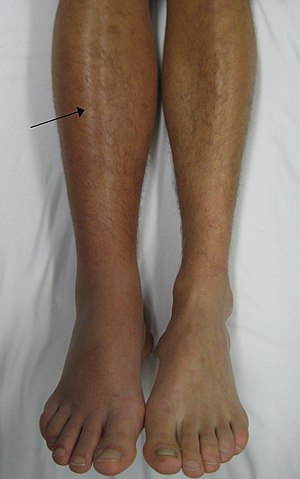Facing the schizophrenic demons as a family...
ARTICLE: First published at Fortitude.
by peter petterson
To follow the ongoing story of my grandson's journey with schizophrenia in the latter months of 2009, I would suggest you read my earlier article, "The demons of schizophrenia unleashed"(link below). To help you identify with my grandson it would be easier to know his name. So for the next little while, lets just call him 'Billie'.
You will have read in the previous article that his nurse took some poetic licence in ensuring Billie could be admitted into the psychiatric system. Her comments caused some reaction from the law who descended on our home in force convinced that Billie was determined to do himself some physical harm; actually in fact he had no intention to inflict more than a breath on his person. But the invading posse which included a sergeant armed with a holstered Glock were determined that this young eighteen year old would not be allowed to self mutilate himself. There were at least six policemen that day who entered or were immediately outside his bedroom.
He was taken into custody meekly and quietly, despite his deterioating psychiatric state of affairs. Billie had never resisted police on any occasion he was involved with them. He was met there by his psychiatrist who accompanied him to the mental health unit at Hutt Hospital in central Lower Hutt city. With the necessary paperwork completed Billie was admitted into hospital, something we had been attempting for a number of months. Previously the 'Arm' of the Mental Health Act: Was he a danger to himself or anybody else — had prevented him being admitted. But despite the fact he didn't fit that category, the poor young man badly needed psychiatric treatment regardless.
Now that he had been admitted and would be examined by one of the resident psychiatrists in the unit, we, his grandparents and caregivers, could get some badly needed rest and leave our grandson in the care of the health professionals for a few days. It is the family members and caregivers who are often ignored and disregarded, despite the fact they care for their relations and charges, 24/7, and know by instinct just what is necessary.
Over the next few days he was observed by doctors and nurses, and had his basic medication changed...this time to Clozapine, the gold standard medication which was once the basis of a Time magazine leading article. Clozapine was reserved for patients who resisted all other anti-psychotic medication. But there were strings attached to using this medication — because of the danger of deterioation of his white cells,and also potential dangers of getting infections through colds, flu, cuts and abrasions etc, he would have to have weekly blood tests to monitor his white cells, firstly for eighteen weeks, and then monthly for the rest of the time he would be treated by Clozapine — perhaps for the rest of his life! Clozapine was not actually a new medication, but the earlier dangers of the medication had not been known at the time, and a number of patients had died. As a consequence the drug had been banned by the American FDA for many years. In recent years safety precautions had been developed to monitor the drug, as previously explained, and the drug was now administered widely around the western world. It was now the gold standard of anti-psychotic medications.
After a few days Billie was allowed some home leave for a a few hours at a time. We were then able to take him home on extended leave. But we had not been warned of the potential side affects of this new drug which, along with his existing medication, caused him to become deeply sedated and lose control of his bladder for some considerable time. We would continue to have problems with his medication, for a number of weeks to come, but that is another story for our grandson Billie and we as a family.
Published on Fortitude August 25, 2010
Copyright 2010 peter petterson
All Rights Reserved




















